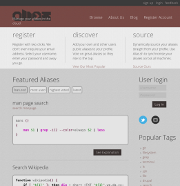Alias are a great tool to help increment your productivity on the terminal with bash (or any shell program you’re using), but usually we are too lazy to think at what are the most common, or long commands that we use frequently and prepare an alias for them. And so someone has done a small […]
Today I want to repost a great article first posted on sysadvent blog.
I think it’s a great post that show how to integrate different software to achieve a modern continuos integration.
Original article by:
Written by: Paul Czarkowski (@pczarkowski)
Edited by: Dan Phrawzty (@phrawzty)
Docker and the ecosystem around it have done some great things for developers, but from an operational standpoint, it’s mostly just the same old issues with a fresh coat of paint. Real change happens when we change our perspective from Infrastructure (as a Service) to Platform (as a Service), and when the ultimate deployment artifact is a running application instead of a virtual machine.
Even Kubernates still feels a lot like IaaS – just with containers instead of virtual machines. To be fair, there are already some platforms out there that shift the user experience towards the application (Cloud Foundry and Heroku come to mind), but many of them have a large operations burden, or are provided in a SaaS model only.
In the Docker ecosystem we are starting to see more of these types of platforms, the first of which was Dokku which started as a single machine Heroku replacement written in about 100 lines of Bash. Building on top of that work other, richer systems like Deisand Flynn have emerged, as well as custom solutions built in-house, like Yelp’s PaaSta.

